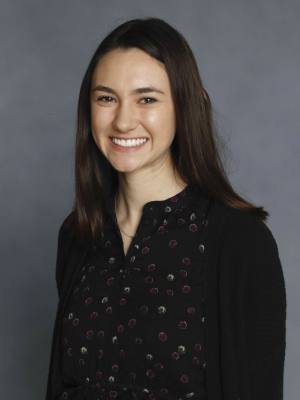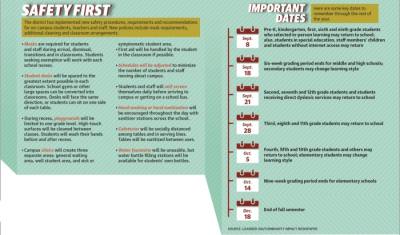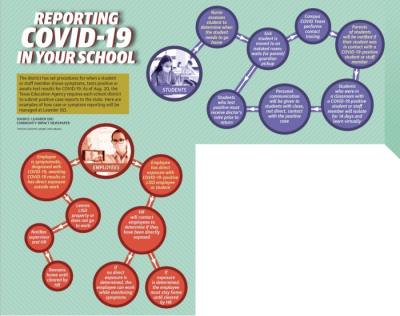Until then, students met their new teachers and classmates via a computer screen rather than in a newly decorated classroom. Students’ homes served as classroom, cafeteria, playground and library as some parents helped manage simultaneous Zoom calls.
The coronavirus pandemic kept students learning exclusively online for the first weeks of school, and due to a technical hitch, high schoolers started their school year two days later than younger students.
LISD families were evenly split on choosing in-person or virtual learning for their students. However, families still have the flexibility to switch learning styles after the end of each grading period.
The Texas Education Agency allowed school districts to add up to four additional weeks of virtual learning, an offer that the LISD board of trustees accepted Aug. 27.
“We know that it is critically important for our students’ mental health and well-being and also for their academic health and well-being to be in person,” LISD Superintendent Bruce Gearing said at the Aug. 20 board meeting. “[We are] striving to be back in person as much as we can be while acknowledging the fact that we are in a global pandemic—we have to protect the health and well-being of all the individuals involved.”
New campus plans
Inside classrooms, maintaining a safe social distance and ongoing cleaning are key to reopening schools and keeping them open, officials said.
Leander ISD’s “Launch to Learning” handbook outlines cleaning frequency and campus protocols.
Students will be spaced as far apart as possible in classrooms, and large areas such as gyms are alternatives for larger classes.
Outside classrooms, procedures for buses, cafeterias and recess were amended for health safety. Specials classes, such as art, physical education and music, were also changed for student-teacher safety.
Specials teachers are encouraged to visit classrooms rather than students traveling to the same specials room.
Jason King, an LISD parent of a first-grader and fourth-grader, said virtual learning worked well overall for his children, but returning to school is right for his family. He said LISD and its teachers are doing as good as they can in the pandemic circumstances.
“We’re definitely ready to get back to in person, and I don’t feel like the kids are learning as much as they would in person just because of the challenges they’re having,” he said.
King said parents’ reasons for sending their children back to school have been misconstrued as “selfish” or dangerous. He said his family did not have any other choice. The family is considering homeschooling if in-person learning does not pan out.
King said he felt parents did not have a voice in the district’s decision making. He said the TEA and the district chose what was needed to keep teachers and students safe, but he said parents were mostly left out of discussions.
“You’re just kind of at the whim of what these governing bodies do,” King said.
LISD has built Campus COVID Teams at each school to aid response to symptoms or positive cases. The TEA requires districts to report COVID-19 cases to the state to be publicly posted because the data is of interest to the public. LISD is considering how to transparently share its COVID-19 cases while protecting privacy, according to an LISD spokesperson.
On campus, the principal, assistant principal and school nurse will contact people who were in close contact with a confirmed COVID-19 positive or symptomatic person. Identified people are to self-quarantine for 14 days, and students are to switch to virtual learning during a quarantine.
When Cristi Peterson met her two students’ teachers, she asked how they felt about the upcoming school year. She also asked how the school prepared their classrooms with hand sanitizer and PPE.
Both teachers held up “zeroes” at their meeting in early August.
Peterson and her husband have since added hand sanitizer, tissues and masks to their carts during each trip to the grocery store.
She hopes to have 100 hand sanitizer bottles for each classroom, and the extra $20 per trip is worth it to her family.
“That’s just one thing that we can do to show that we appreciate them and that we appreciate their sacrifice,” Peterson said.
Their family elected to send their children to in-person learning. Peterson’s first grade student is asthmatic but is “bored to tears” at home. She said their family has discussed in-person learning and prepared medications and supplies for their children to safely return.
“It’s a risk that we’re willing to take because the benefit for our kids and their learning far outweighs the fact that they’re going to get sick, unfortunately,” she said.
Phased return
Rather than a wide return to campuses Sept. 8, students will return to schools in four phases separated among grades and groups rather than all students returning at once.
“We want to do this in a way that is slow and steady so that we can stay open for the longest time possible,” Gearing said Aug. 20.
On Aug. 14, Austin Public Health, the health district for Austin and Travis County, recommended school districts reopen with up to 25% on-campus instruction. The health district gave phased guidelines to gradually work up to 100% on-campus learning.
Gearing said the health district’s recommendations spanned six weeks, though TEA guidelines allow up to four weeks of additional virtual learning. Since timelines from Austin Public Health and TEA are contradicting, LISD officials suggested a condensed four-week phased plan.
The second and third phases were compressed to fit into TEA guidelines while still allowing time for the district to see the effects of the first opening phase, which spans two weeks. Following phases are one week long.
“We felt that we needed a little more time in Phase 1 to try to mitigate whatever happens as we bring kids back in person before we start Phase 2,” Gearing said at the Aug. 20 board meeting.
In addition, the added time between phase groups would give staff time to prepare.
Families who see virtual learning as the best option for their family can keep their children at home through May.
Teachers have spoken against returning to in-person teaching at recent board of trustees meetings for health and safety reasons.
“Of course we all prefer in-person learning, but this is the safest option right now,” LISD teacher Sarah Alarcon said of remote learning at the Aug. 20 meeting. “We must prioritize people’s lives. ... I am a teacher, not a hero. I want to teach, not sacrifice my life at work.”
All teachers must return to classrooms Sept. 8 regardless of teaching virtually or in person. The district will work with high-risk teachers to determine alternatives for their health.
“As our in-person learning gets closer, I feel disheartened, and I feel like my life isn’t valued,” LISD teacher Alexis Huddleston said Aug. 20. “Many feel called to this profession, but we do not feel we are called to die for other duties as assigned.”
Ali Linan contributed to this report.







